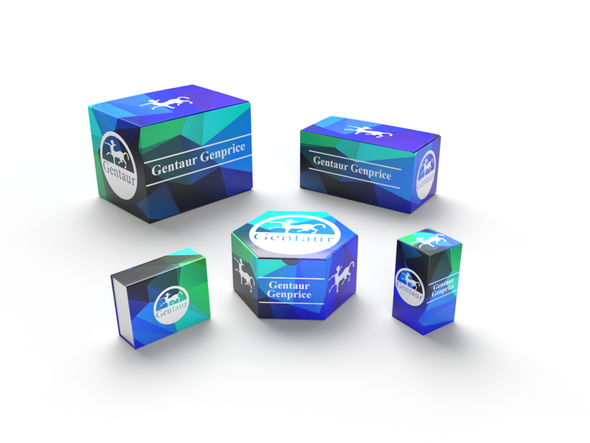BW
p14 ARF/p19 ARF (Q99) polyclonal Antibody | BS1266
- SKU:
- BW-BS1266
- Availability:
- Usually ships in 5 working days
Description
p14 ARF/p19 ARF (Q99) polyclonal Antibody | BS1266 | Gentaur UK, US & Europe Distribution
Host: Rabbit
Reactivity: Human,Mouse,Rat
Application: IHC IF
Application Range: IHC: 1:50~1:200 IF: 1:50~1:200
Background: The INK4a/ARF locus encodes two unrelated tumor suppressor proteins, p16INK4a and p19ARF that restrain cell growth by modifying the functions of the retinoblastoma protein and p53, respectively. It is among the most frequently mutated tumor suppressor loci in human cancer. Both p16INK4a and p19ARF act as cell proliferation inhibitors. The ARF gene, p19ARF in mouse and p14ARF in human, has become an important player in cell cycle regulation. In mice, tumor suppressor effects appear to be mediated by interactions between p19ARF and the p53 tumor suppressor protein. p19ARF counters uncontrolled proliferation and oncogenic signals in p53 dependent pathways. Both p16INK4a and p19ARF are expressed in many cells as they emerge from the apoptotic crisis that characterizes the transformation process. Expression of p19ARF but not p16INK4a induces apoptosis in Ab-MLV-transformed pre-B cells.
Storage & Stability: Store at 4°C short term. Aliquot and store at -20°C long term. Avoid freeze-thaw cycles.
Specificity: p14 ARF/p19 ARF (Q99) polyclonal Antibody detects endogenous levels of p14 ARF (human) /p19 ARF (Mouse) protein.
Molecular Weight: ~ 18 kDa
Note: For research use only, not for use in diagnostic procedure.
Alternative Names: Cyclin-dependent kinase inhibitor 2A, isoform 4; p14ARF; p19ARF; CDKN2A; CDKN2; MLM
Immunogen: Synthetic peptide, corresponding to amino acids 65-121 of Human p19 ARF.
Conjugate: Unconjugated
Modification: Unmodification
Purification & Purity: The Antibody was affinity-purified from rabbit antiserum by affinity-chromatography using epitope-specific immunogen and the purity is > 95% (by SDS-PAGE) .
Pathway: Cell Cycle Control G1 S Checkpoint,










